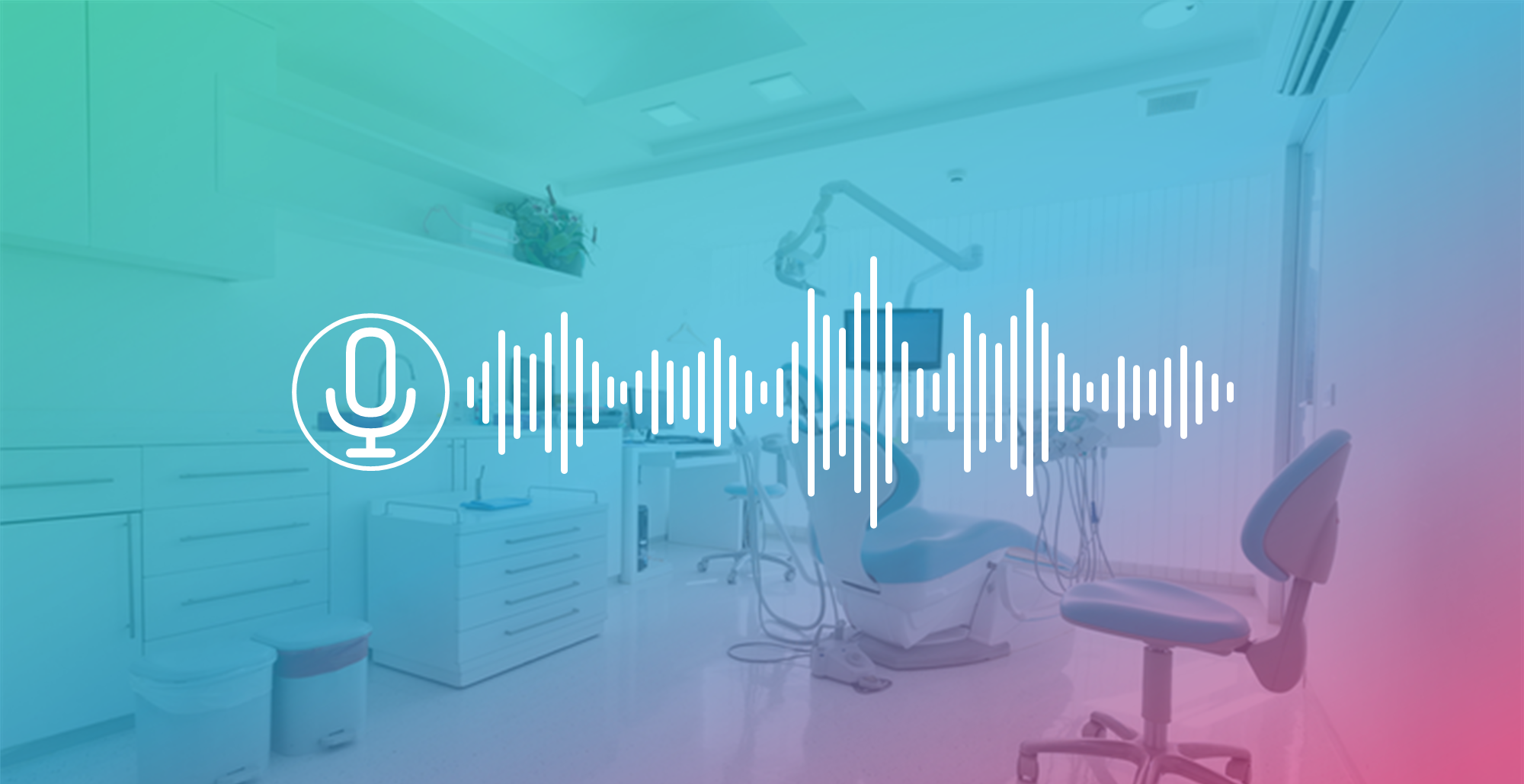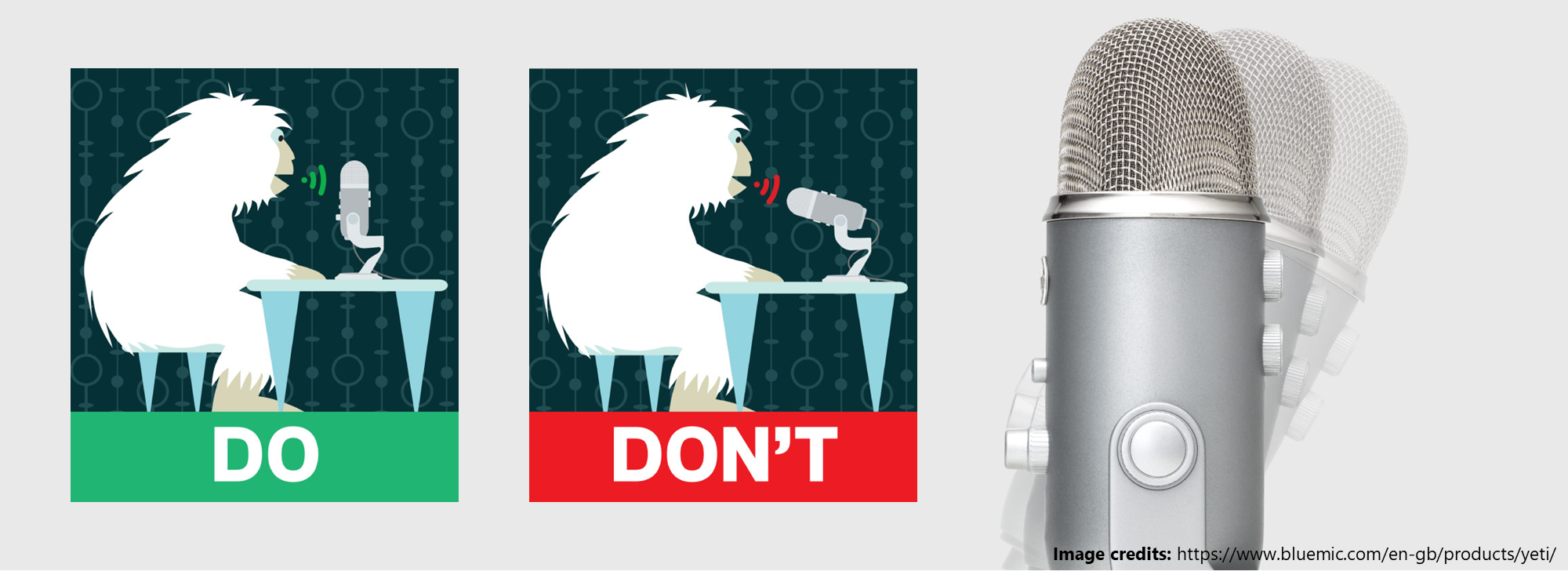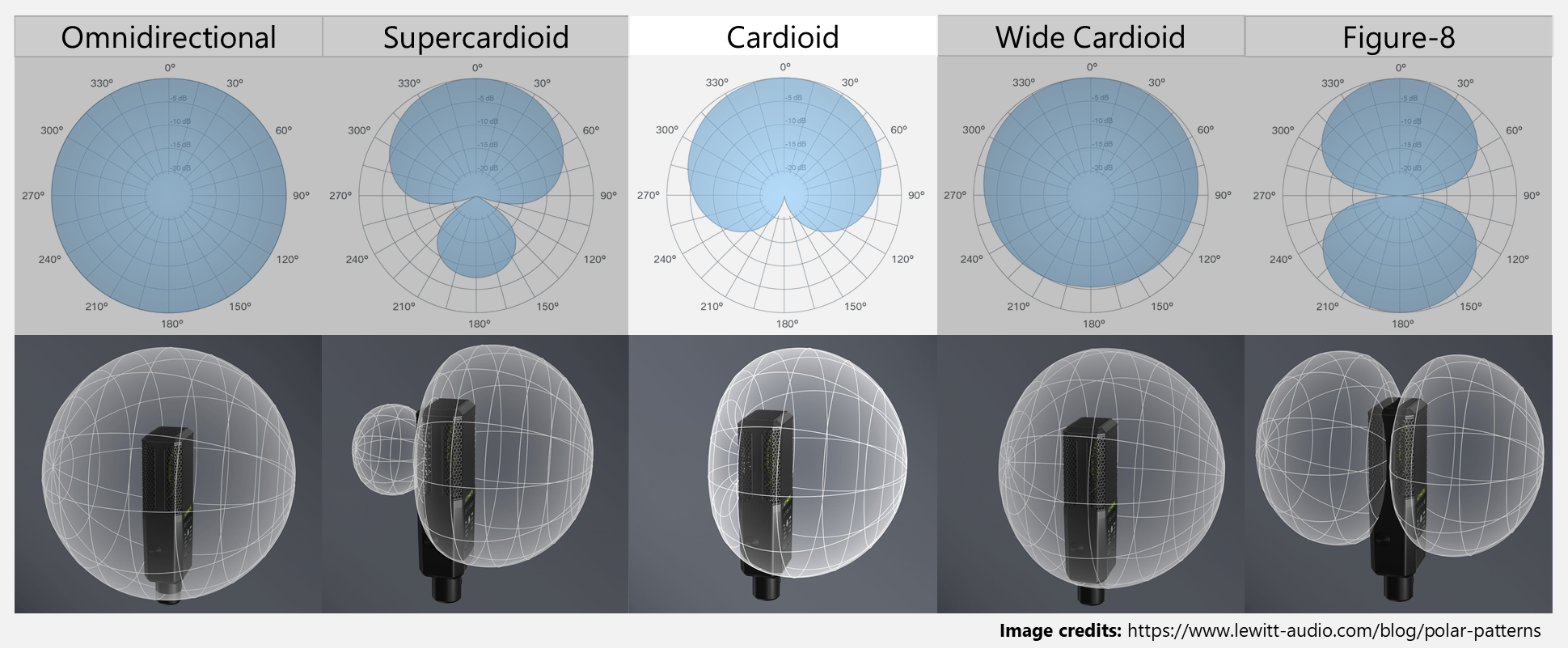
The microphone has the greatest impact on the quality of any audio recording, including those created with DAN. This article supports your decision making process when choosing a microphone and provides guidance on positioning it in your surgery so you get the best results using DAN.
Select a side-address condenser microphone with a cardioid pattern. Position it on any surface around your surgery, ideally to the side of the conversation, and angle the mic so it’s front points towards the direction of conversation. Plug it into the surgery’s computer. Start recording.
We have had excellent results with the Yeti microphone from Blue1. It provides good quality, design and versatility at c.£120.
We want to unobtrusively enhance the patient experience and oral health by providing a good record of their consultation. To achieve this, we should consider a microphone’s audio quality, design, and price.
Audio quality: We need to clearly pick up the voice of both the dental health practitioner and the patient to ensure that the conversation can be easily heard when played back and listened to. The most important characteristics of microphones for spoken sound audio quality are their positioning, directionality, controls and operating principle. Their electrical output and connectivity should also be considered for reliability and ease of use.
Physical appearance and design: There is a wide range of form and colour in microphone design, so you should be able to find one that fits in with your branding and surgery environment.
Price: To provide quality audio recordings of your consultations to your patients, we would suggest budgeting around the £150 mark for a microphone.
We want to unobtrusively enhance the patient experience by providing a good recording of the consultation, avoiding any experience of speaking into or towards a microphone. A good position to start is on top of your side units, ideally to the side of the conversation. Angle the mic so it’s front points towards the direction of conversation. It is worth noting that many desk-top microphones are “side address”, which means that the front of the microphone will be on the side, not the top.

If your preferred microphone position is a significant distance away from your computer, be sure to use a high quality lead between your microphone and computer. A USB lead powers a microphone and a longer wire must be thicker to ensure the mic gets the power it needs.
A microphone's polar pattern describes how it responds to sound waves from different directions. Some microphones will support multiple polar patterns with the control of a switch. The most applicable pattern for our environment is called “cardioid”. A cardioid polar pattern provides the highest sensitivity to sound coming in from directly in front of the microphone, a reduced sensitivity to sound coming in from the sides, and practically no sensitivity to sound coming directly from behind. This helps to exclude background noise and room reflection.

Most suitable microphones will use USB, outputting a plug-and-play digital signal straight into a computer and providing controls to further enhance the audio quality. In addition to being able to adjust the polar pattern, a gain control allows you to get good volume in your recordings, even with softly spoken consultations by adjusting the microphone’s sensitivity.

As a rule of thumb, condenser microphones offer superior sound quality. This is why:
A microphone’s transducer converts sound waves propagating through the air into an electric signal. There are two main operating principles; dynamic and condenser. In short, a dynamic microphone diaphragm vibrates a coil of wire wrapped around a fixed magnet, passively inducing analogue current signals. A condenser microphone diaphragm vibrates the distance between capacitor plates, varying the capacitance and providing a voltage signal.
Due to its extremely low mass, the diaphragm of a condenser microphone can follow the sound waves more accurately than that of a dynamic microphone. This provides wider frequency response, more rapid transient response and increased sensitivity, reducing noise. This results in a tendency to be “brighter” and “more live”. They are more delicate than a dynamic microphone, but a dental surgery environment should not be challenging in this regard.
A physically larger microphone can have a larger diaphragm which is generally better for voice as it will be less sensitive to loop and mouth sounds, such as a ‘pop’ of a ‘p’ or ‘b’.
There is a wide range of form and colour in microphone design, so you should be able to find one that fits in with your branding and surgery environment.
Most microphones will come with a detachable desk mount and this is the best way to start. Do be aware that the mic will pick up vibrations from the surface on which it is mounted, so avoid tapping tables. If your mic needs to be near the computer keyboard and a team member is typing your notes as you go, have a look for a shock mount or boom arm that fits your microphone.

To provide high quality audio recordings of your consultations to your patients, you should budget around the £150 mark for a microphone. Here is an example of microphones and their prices as found online in December 2021.
